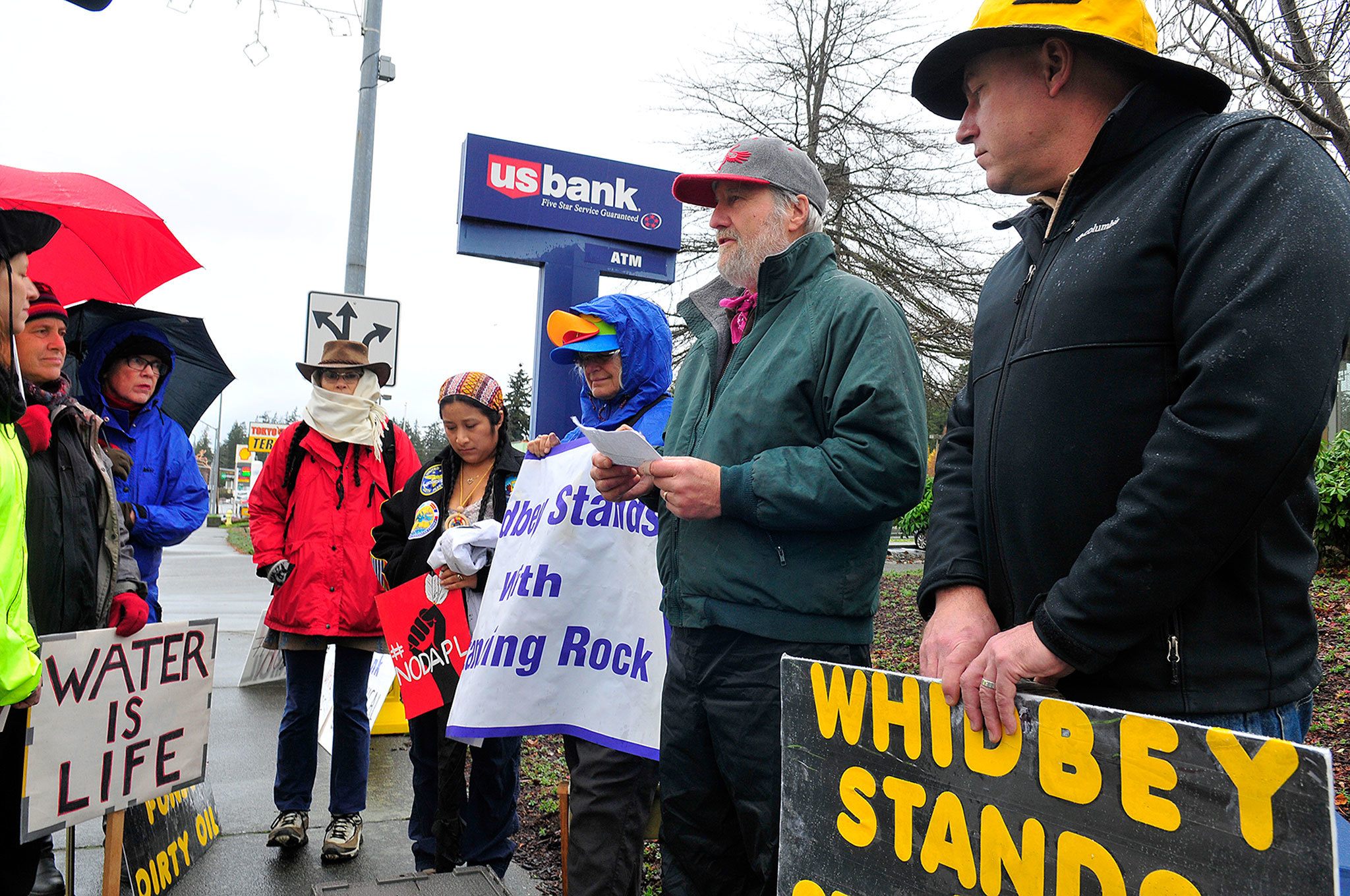Coupeville resident Gary Piazzon is one in a growing list of Whidbey Island residents who have traveled to North Dakota to take part in one the longest-standing — and coldest — protests in modern history.
Thousands of people from around the world have joined with the Standing Rock Sioux Reservation over the past seven months in opposing a corporation’s plans to build a section of the $3.8 billion Dakota Access Pipeline underneath the Missouri River near the reservation.
The Sioux fear it will leak and destroy their source of water and threaten sacred sites.
“It’s a quite heartening and beautiful thing to be there with people who are aware, concerned and dedicated to seeing change in the world for the better,” said Piazzon, who was there twice, most recently building an interfaith yurt at the main camp in November.
At least one military veteran from the island will join with other veterans this weekend to act as human shields for the activists — who call themselves “water protectors” — against police who have used rubber bullets and fire hoses in the past, according to South Whidbey resident Vicki Robin, who traveled there in September.
“They are bringing their warrior spirit,” she said.
She knows of several other Whidbey people, including a family of four, headed there just this week.
In addition, a few dozen people on Whidbey have taken part in two peaceful demonstrations outside banks in Coupeville and Oak Harbor to protest the banks’ investments in the pipeline project. Piazzon led a prayer at the demonstration outside the U.S. Bank in Oak Harbor Thursday.
For anyone who wants to learn more about what’s going on from people who’ve been there, a teach-in on Standing Rock is 6:30-8:30 p.m., Wednesday, Dec. 7 at Unitarian Universalist church, Highway 525, Freeland.
Whidbey residents who’ve made the sojourn — including Rev. Dennis Reynolds — will be there, as well as a filmmaker from the Lummi Nation and a Port Townsend activist, Robin said.
Robin said that protest has captured the attention of so many people because the situation touches on a range of issues.
There are people who are concerned about the environment and global warming; people who are dedicated to social justice and Native American rights; religious and spiritual leaders who feel there’s more to the world than money and greed; and people who don’t like to see big corporations and big government trampling the “little guy.”
On the other side, Texas-based Energy Transfer Partners and the Army Corps of Engineers argue that the protest is blocking a lawful project that will be a boon to the economy. The pipeline, they say, is the more efficient and environmentally responsible way to transport nearly 500,000 barrels of oil a day to areas in Illinois, where most of it will be exported to other countries, according to the New York Times.
One of the reasons environmentalists oppose the pipeline, Piazzon said, is because it will convey oil that was fracked from North Dakota’s Bakken Oil Fields. Fracking, in which fracking fluid is injected into the ground under pressure, is opposed by many who feel that it can pollute water and even trigger earthquakes.
Also, the oil contributes to global warming. Piazzon argues that the Age of Fossil Fuels must come to an end as the nation moves toward conservation and alternative energy, which provide better jobs.
The pipeline, as Piazzon points out, was originally planned to cross underneath the Missouri River near Bismarck, but residents of the town — who are mostly white — complained about the risks of oil spills, so the company decided to go under the river at Standing Rock instead.
Piazzon said the company made the decision without notifying the tribe and the permits were obtained in a manner to avoid an Environmental Impact Statement.
The Standing Rock Sioux sued the Army Corps over the permits in July and lost. The Sioux claim the pipeline will travel through burial sites and other culturally sensitive sites, as well as endanger the water source. The property in question is officially owned by the federal government, but the Sioux claims ownership based on a 1851 treaty.
The “water protectors” blocked the project and set up several camps in the area. People from outside of the tribe have been drawn to the camps. Even celebrities like Mark Ruffalo, who plays the Hulk, spent time there.
Piazzon traveled to the main camp twice to support interfaith efforts. In November, he worked on a large yurt that will provide much-needed shelter to the faith community as winter approaches.
He said he had to catch the train back home just as things turned violent. He didn’t witness any clashes firsthand but saw speeding police cars and ambulance, as well as helicopters and aircraft flying low over the camp.
Police deployed fire hoses at night, despite the sub-freezing weather, as well as rubber bullets and tear gas. A 21-year-old woman’s arm was severely injured by what activists described as a concussion grenade deployed by the police, but the police denied using it. The police claimed protesters threw rocks at officers and tried to pull down police barricades. Nearly 300 people were injured as a result of police force, according to the New York Times.
Robin said an irresistible call she can’t quite explain drew her to Standing Rock. She said she met other people who felt the same way. She made a brief visit to the Sacred Stone camp and delivered jackets and blankets from Whidbey.
“It was an amazing, self-organizing camp,” she said. “It was very peaceful.”
The government ordered protesters to leave federal land by Monday.



